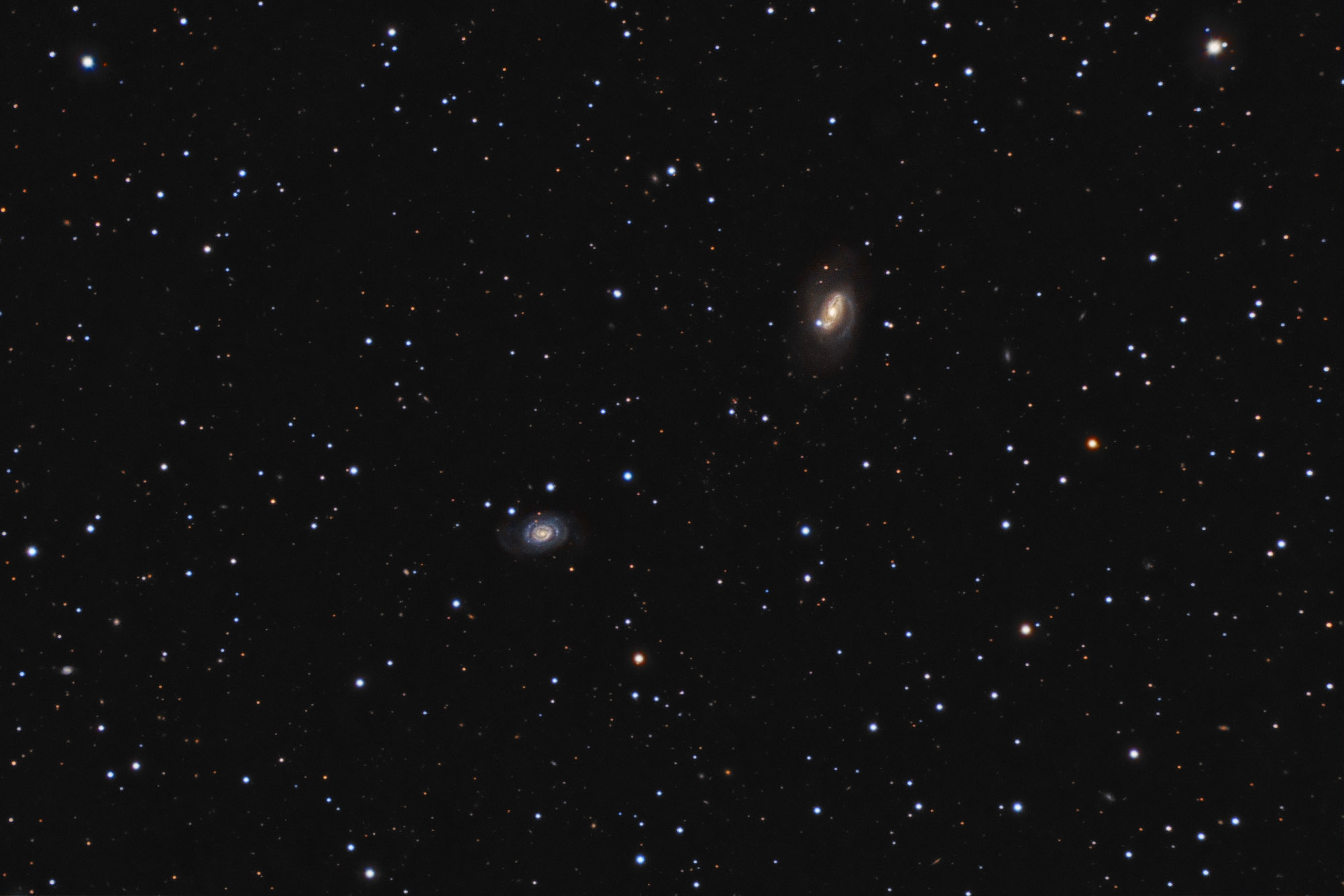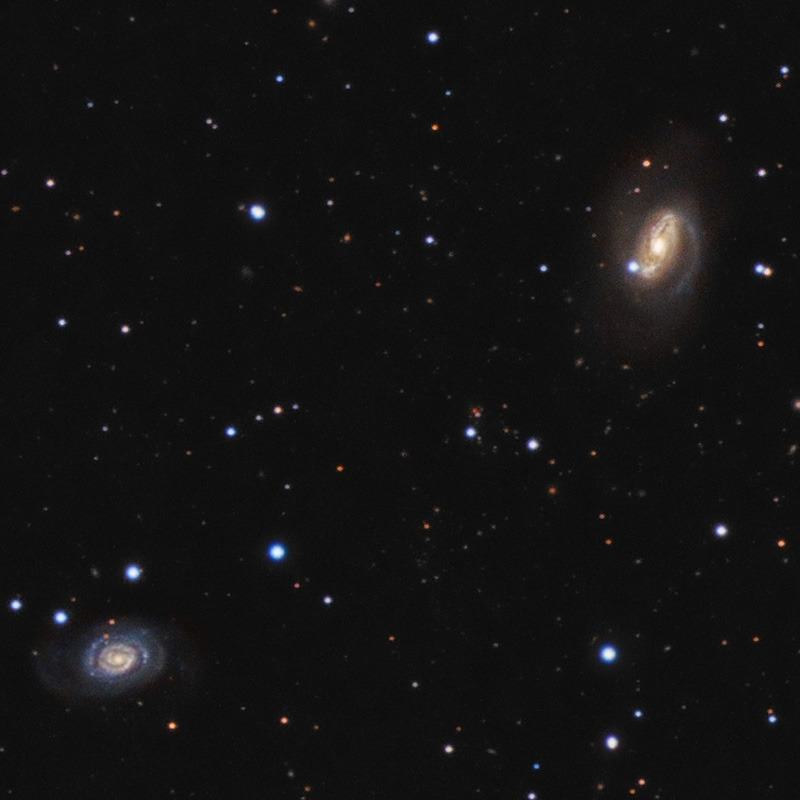| Description | Images |
Object name: NGC0023Designation(s): NGC0023, NGC0026, NGC 23 and NGC 26 are a pair of galaxies about 195 million light-years distant in the constellation of Pegasus about three degrees south of Alpheratz. NGC 23, the northwestern member, is classed by NED as SB(s)a; HII;LIRGSbrst while the NGC project says simply SB(s)a. HII means it has rather strong H alpha emission. This can be seen in the HST image at: http://commons.wikimedia.org/wiki/File:NGC23-hst-110-160-190.jpg which shows just the very core of the galaxy out less than 10" of arc. LIRGSbrst means it is a luminous infrared galaxy with starburst activity. This too is found in a region less than 10" from the galaxy's core. In any case, the galaxy appears somewhat disturbed so has likely interacted with some other galaxy, possibly NGC 26 10 minutes to the southeast which also appears disturbed. It is very non-symmetrical both as to the barred region which is much more organized to the north than to the south and the outer arms. The southern bar region seems to consist mostly of two bright star clouds. Off of each end are two the two faint arms. The one coming off the northern end and running down the western side is much brighter and condensed than the one coming off the disorganize southern end. The latter extends faintly well to the north more as a tidal plume than a spiral arm. Related Designation(s):2MASS J00095340+2555259, 2MASS J00102586+2549549, 2MASX J00095341+2555254, 2MASX J00102587+2549544, 87GB 000717.6+253820, 87GB[BWE91] 0007+2538, AKARI J0009533+255529, ALFALFA 4-220, ALFALFA 4-221, CGCG 0007.3+2539, CGCG 0007.8+2533, CGCG 477-062, CGCG 477-064, CGCG 478-034, CGCG 478-036, GALEXASC J000953.40+255524.9 , GALEXMSC J000953.45+255523.4 , GB6 J0009+2555, IRAS 00073+2538, IRAS 00078+2533, IRAS F00073+2538, IRAS F00078+2533, KUG 0007+255, KUG 0007+256, LGG 002:[G93] 003, LGG 002:[G93] 004, MCG +04-01-033, MCG +04-01-034, MRK 0545, NGC 0023, NGC 0026, NGC0023, NGC0026, NSA 126309, NSA 126323, NVSS J000953+255526, NVSS J001025+254957, PGC 000698, PGC 000732, SDSS J000953.42+255525.6, SSTSL2 J000953.37+255526.2, UGC 00089, UGC 00094, UZC J000953.4+255526, UZC J001025.8+254955, UZC-BGP 02A, UZC-BGP 02B, [BTW2003] J0010+2557, [M98j] 001 NED01, [M98j] 001 NED02, [RHM2006] LIRGs 020, |

